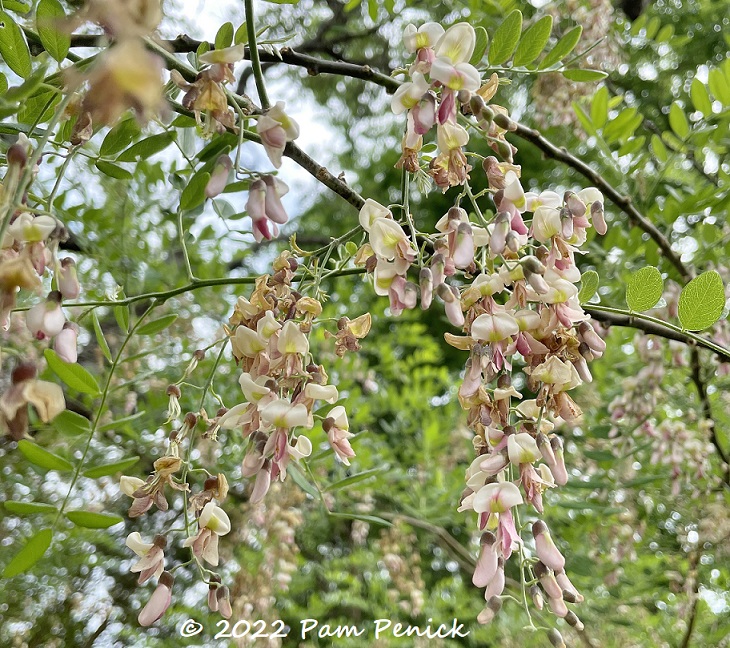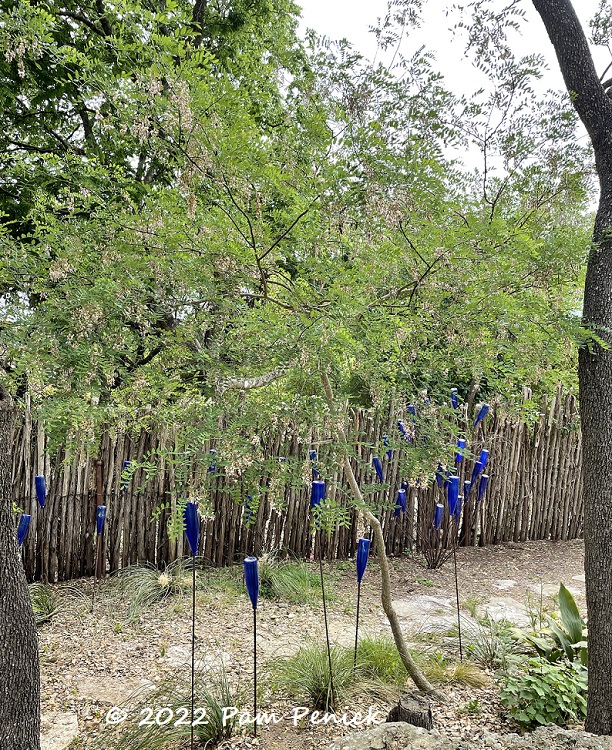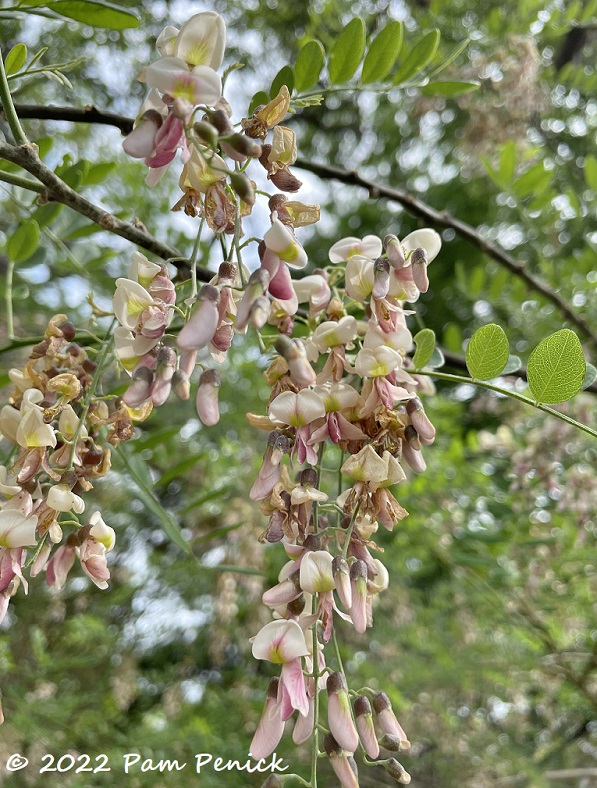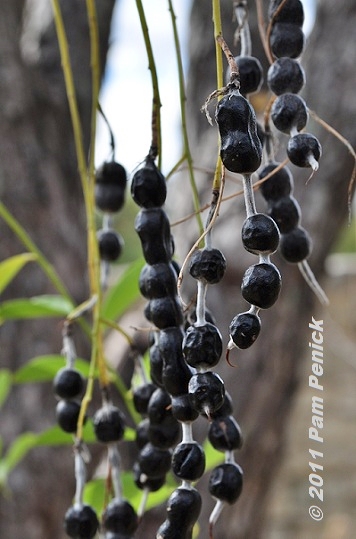Plant This: Eve’s necklace for spring flowers that bees love

Eve’s necklace may not be widely known among gardeners. But bees and other nectaring insects sure know it and love it. Formerly called Sophora affinis, now Styphnolobium affine, this small deciduous tree with lacy foliage occurs naturally in well-drained limestone (i.e., alkaline) soils in North and Central Texas, as well as in Oklahoma, Arkansas, and Louisiana.
Cascading clusters of pink-and-ivory blossoms appear in late March or early April, attracting a contingent of bumblebees, honeybees, and the occasional wasp. By the time I took these photos in mid-April, the flowers were fading to a pinky beige reminiscent of Farrow & Ball’s Setting Plaster. Grandmacore, anyone?

My tree grows under live oaks and still flowers prolifically. However, its canopy is loose, almost rambling, in the shade. In full sun, Eve’s necklace fills out into a full, rounded canopy. Dave Creech, director of the SFA Gardens at Stephen F. Austin State University in Nacogdoches, recommends Eve’s necklace as a substitute for crape myrtle in the Deep South, where our beloved crapes are being decimated by newly introduced crape myrtle bark scale. He’s also developing a cultivar called ‘Amy’ with darker, more richly colored flowers.

Beneath the pendant blossoms, it’s fun to watch the eager pollinators. I stood here one day and watched a large bee zipping from flower to flower. Unfortunately I wasn’t able to get a good photo, so you’ll just have to imagine it.

After the flowers fade, distinctive black seedpods form along the stems. These beaded strands give Eve’s necklace its common name. As with its cousin Texas mountain laurel, the seeds are poisonous, so no grazing.
Once established, Eve’s necklace needs no supplemental irrigation. It grows in sun or shade to a height of 15 to 30 feet and is hardy to Zone 7. It’s time to acknowledge Eve’s necklace is a tree worth knowing.
Note: My Plant This posts are written primarily for gardeners in Central Texas. The plants I recommend are ones I’ve grown myself and have direct experience with. Check online forums for your region or local independent nurseries to see if a particular plant might work in your area.
__________________________
Digging Deeper
Come learn about gardening and design at Garden Spark! I organize in-person talks by inspiring designers, landscape architects, authors, and gardeners a few times a year in Austin. These are limited-attendance events that sell out quickly, so join the Garden Spark email list to be notified in advance; simply click this link and ask to be added. Season 8 kicks off in fall 2024. Stay tuned for more info!
All material © 2025 by Pam Penick for Digging. Unauthorized reproduction prohibited.


This is an under appreciated tree for sure! My specimen is in deep shade under tree cover between my house and the neighbor house. It does quite well, but is sprawly and odd shaped, just as you described. Imo, a better crepe myrtle substitute is desert willow (Chilopsis linearis) and its hybrid Chitalpa x tashkentensis. They bloom for a long summer season, just like crepes, and there are some vividly colored cultivars.
You’re right, Peter. Desert willow and chitalpa are great native substitutes for crape myrtle, at least in full sun. Eve’s necklace can take considerably more shade, but of course it gets that lanky look in the shade. In all cases, they need much less water.
I love this tree and planted one several years ago. It was doing well until the deer found it and browsed it to death! Today I saw a container grown Eve’s Necklace at a local nursery but it was $160. Reading the description of this ornamental tree on the Ladybird Wildflower website, it mentioned propagation with scarified seed. And, a plant grown from seed will be six feet tall in three years! Am wondering if anyone that has this tree could perhaps share some of those “beads” (aka seed pod) with readers? I have installed a tall fence around my backyard since the demise of my Eve’s Necklace so all my plants are now safe from those nibblers.
Where are you located, Sherry? If possible, I’ll be happy to mail you some seeds if mine sets some. Feel free to email me. Look for the Contact Me tab at the top of the page.
Is the honey made from Eves Necklace poisonous to humans the same as Mountain Laurel honey? They’re both related species. I was wanting to plant some for my beehives but until I find out more about them I won’t.
I’m afraid I don’t know the answer to that, James.
I have an Eve’s necklace in my backyard and now it is coming up everywhere. I’m happy to share if people want to dig.